_We may earn revenue from the products available on this page and participate in affiliate programs. Learn more ›
_
Ask any walleye nut and they’ll tell you there’s lots to love about these popular game fish—and loads of reasons to learn how to catch walleye. First, walleyes are widely distributed across the country, and where they’re found, they’re often found in very good numbers. When they’re biting, you can catch them on almost anything, yet they can also test the very best anglers. And, of course, walleyes are excellent table fare.
Okay, so there are a handful of haters who will point out that walleyes don’t fight like a 5-pound smallmouth or a 25-pound chinook salmon, but if you hook into an 8-pound walleye, your blood pressure is going to rise. And with the smaller ones, your stomach might very well growl. Either way, it’s worth learning not just how to catch walleye, but how to catch a lot of them and how to target the biggest fish. Here’s how to get started.
How to Catch Walleyes: Table of Contents
Where to Find Walleyes in Rivers and Lakes
The Tackle You Need to Catch Walleye
Top Rods for Walleye Fishing
Best Reels for Walleye Fishing
Top Line Options for Walleye Fishing
The Best Tactics for Catching Walleye
Best Baits, Lures, and Rigs for Catching Walleyes
Where to Find Walleyes in Rivers and Lakes
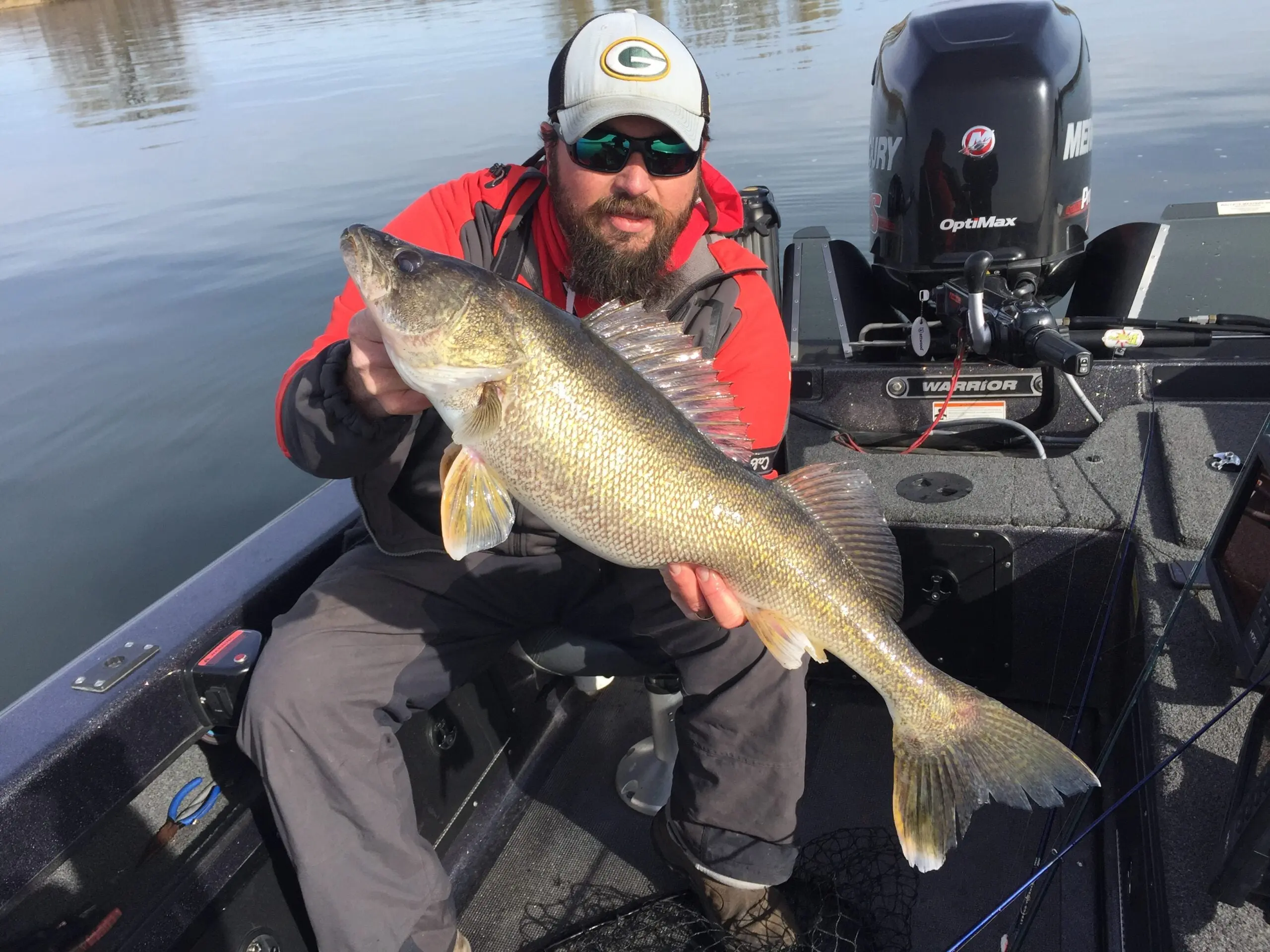
Bill Sauders
The northern half of the U.S. is home to the majority of the nation’s walleye population, from the St. Lawrence River west to the Columbia. But they are found farther south, too. One of the best walleye lakes in the country is Greers Ferry in north-central Arkansas. Some of the very best fisheries for consistent walleye action include Lake Erie, Mille Lacs Lake, Sharpe and Oahe lakes on the Missouri, Fort Peck Reservoir, and the aforementioned Columbia River between Washington and Oregon.
Walleyes are found not only in lakes, but in rivers and smaller tributaries, particularly in the Midwest and Upper Midwest. When it comes to finding walleyes on the lakes and river systems you fish, you want to remember these key considerations.
Walleyes Are Nomadic
Walleyes are wanderers, never staying in one place very long, always moving to cooler water as the temperatures rise, and—most importantly—following their preferred food, whether that is alewives, shad, or pike minnows. Find the food; find the fish.
Walleyes Need Structure
Because walleyes are ambush predators, they need some cover around which to hide as they wait to attack their prey. In moving water, walleyes use structure as a break from heavy current and as a funnel that sweeps prey into their strike zone. That may be a wing dam, rock pile, roller dam apron, or a logjam. In lakes, walleyes gravitate to any change in the bottom structure, such as underwater humps, old creek channels, flooded roadbeds, and abrupt drop-offs.
Water Depth is Key
Generally speaking, walleyes are going to be found in depths ranging from 10 to 40 feet, though this depends greatly on the overall depth of the water body. Spring spawning and cooler water concentrate walleyes in shallower water. With summer heat comes warm water temperatures, and the fish go deeper. Fall sees the return of cooler water and often, but not always, a return to the shallows.
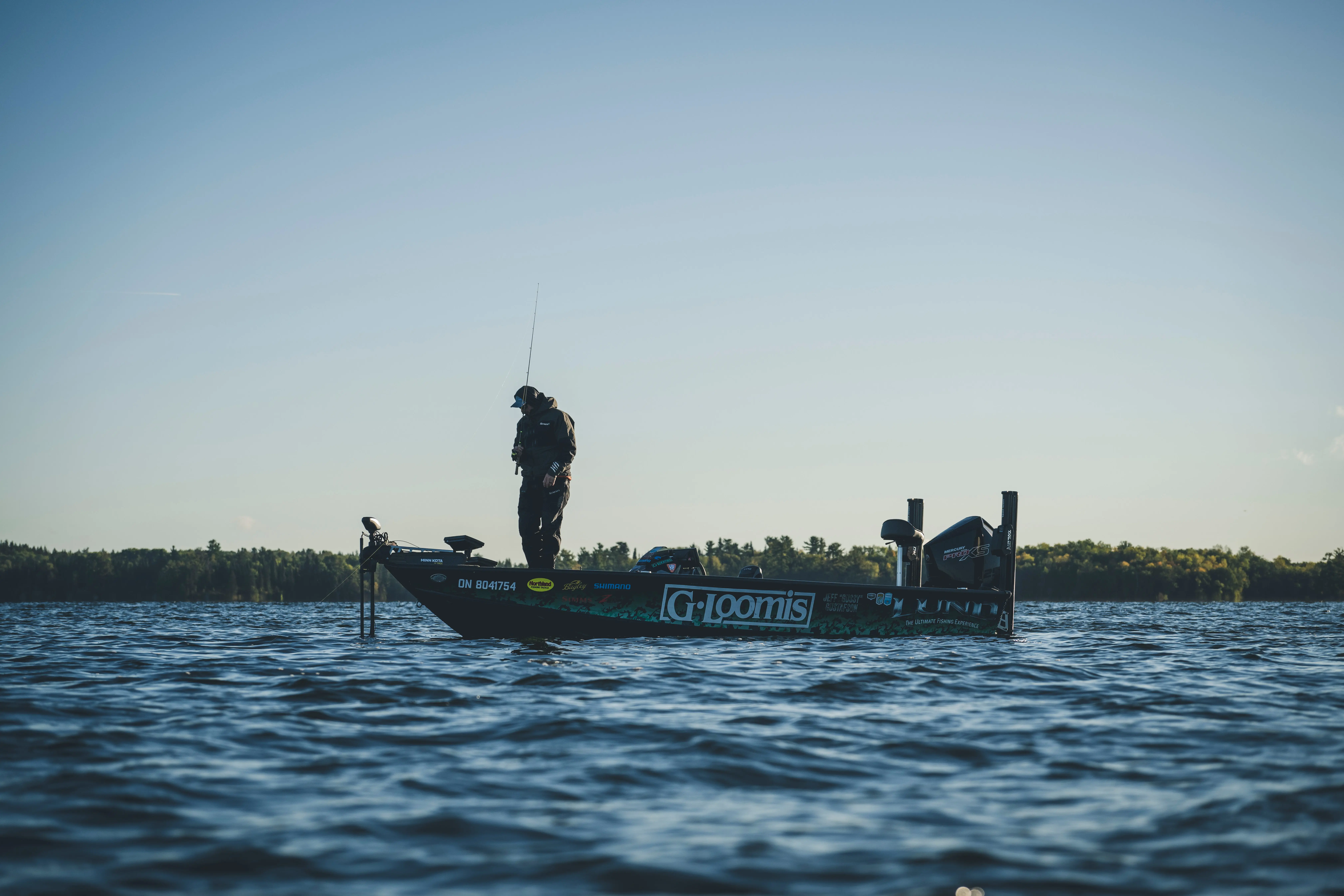
G. Loomis
Electronics are Vital for Catching Walleyes
Searching for walleye is as much a part of walleye fishing as is the actual catching. So, having quality depth-finders is key. A good depth-finder will not only display water temperature and depth, but can help you pinpoint structure, bait, and even walleyes themselves.
The Tackle You Need to Catch Walleye
Walleye fishing tackle can be complicated, but it doesn’t have to be. The common denominator regardless of what rod, reel, and line combination you put together, is feel—or sensitivity. Walleyes will, at times, hammer a bait or lure, but they are well known for subtle takes. You’ll feel something, but it can be tough to know whether that something is a fish, a piece of coontail, or a rock. At that point, it’s all about feel. And that, in turn, should guide your tackle choices.
Top Rods for Walleye Fishing
Many walleye anglers are partial to spinning tackle; however, baitcasting gear will certainly fill the role, as long as that sensitivity component is there. As 6 1/2- to 7-foot medium action rod will handle most applications. For trolling a longer, slightly heavier-action rod can be used for any number of techniques, including flat-lining crankbaits, drifting live baits, or running smaller side-planers. Some excellent options include:
Abu Garcia’s 21st Century Virtual Spinning Rod in 6’6” or 6’9” lengths
Okuma’s Great Lakes Trolling Combo, available with 7’6” or 8’6” medium-action rod
Best Reels for Walleye Fishing
Like rods, walleye reels don’t need to be high-tech or ridiculously expensive, but yours should be capable of holding 125 yards of braid or fluorocarbon and possess a good drag system. Three solid options include:
Top Line Options for Walleye Fishing
Though many walleye anglers have made the switch to modern braided lines, monofilament or fluorocarbon are still very popular on most waters. For casting spinners or spoons, jigging, or fishing live baits under a slip bobber, 8- or 10-pound monofilament or near-invisible 12-pound fluorocarbon are great choices. That said, either can be replaced with 10-pound braid and used in conjunction with a quality fluorocarbon leader. For trolling, most reels will be spooled with a 10- or 12-pound low-vis braid, with, again, a fluorocarbon leader.
The Best Tactics for Catching Walleye
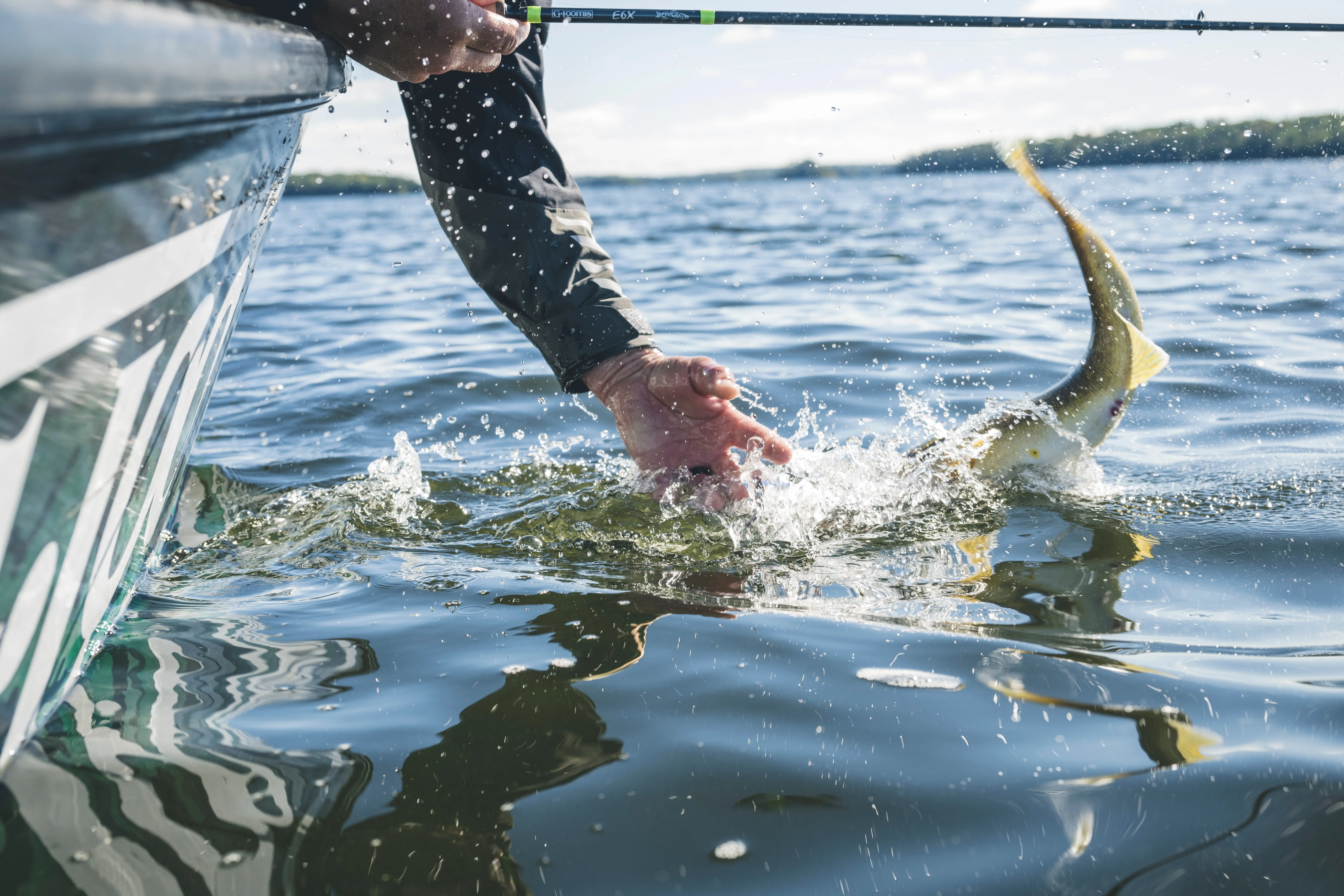
G. Loomis
There is no singular best method for catching walleyes. What works in one place on a given day may not work elsewhere. There are, in fact, several “best” methods, for how to catch walleyes, and you should know them all. Here’s a rundown.
How to Catch Walleyes with Jigs
Jigging likely accounts for more walleyes annually than all the other techniques combined. Why? Because it is highly versatile. Jigs can be fished vertically over structure from a stationary boat, cast from boat or bank, or worked just above the bottom while allowing the boat to drift with the wind and waves. Jigging works in still water or current and can be effective year-round.
Jigs come in a wide variety of shapes, sizes, and colors, but most walleye waters lend themselves to jigs in the 1/8- to ¼-ounce range, with some larger rivers or deep lakes calling for jigs in the ½- to ¾-ounce category. As productive as it is, jigging takes some practice to really get good at. A sensitive rod, maintaining a tight line while the jig is falling, and learning to feel subtle takes are all key.
How to Catch Walleyes by Trolling
Second only to jigging in terms of overall walleye catches, trolling involves pulling a lure—usually a spinner, baited spinner, spoon, plug, or stickbait—at a specific depth and speed by means of a motorized skiff or boat. Trolling for walleyes can prove challenging for beginners. Knowing where to begin is the first question, but this can be answered by using quality electronics to reveal water depth and structure. How deep to troll, too, is another variable, one again answered by locating fish in the water column with your depth finder. Once you dial it in, though, trolling can be very effective.
How to Drift for Walleyes
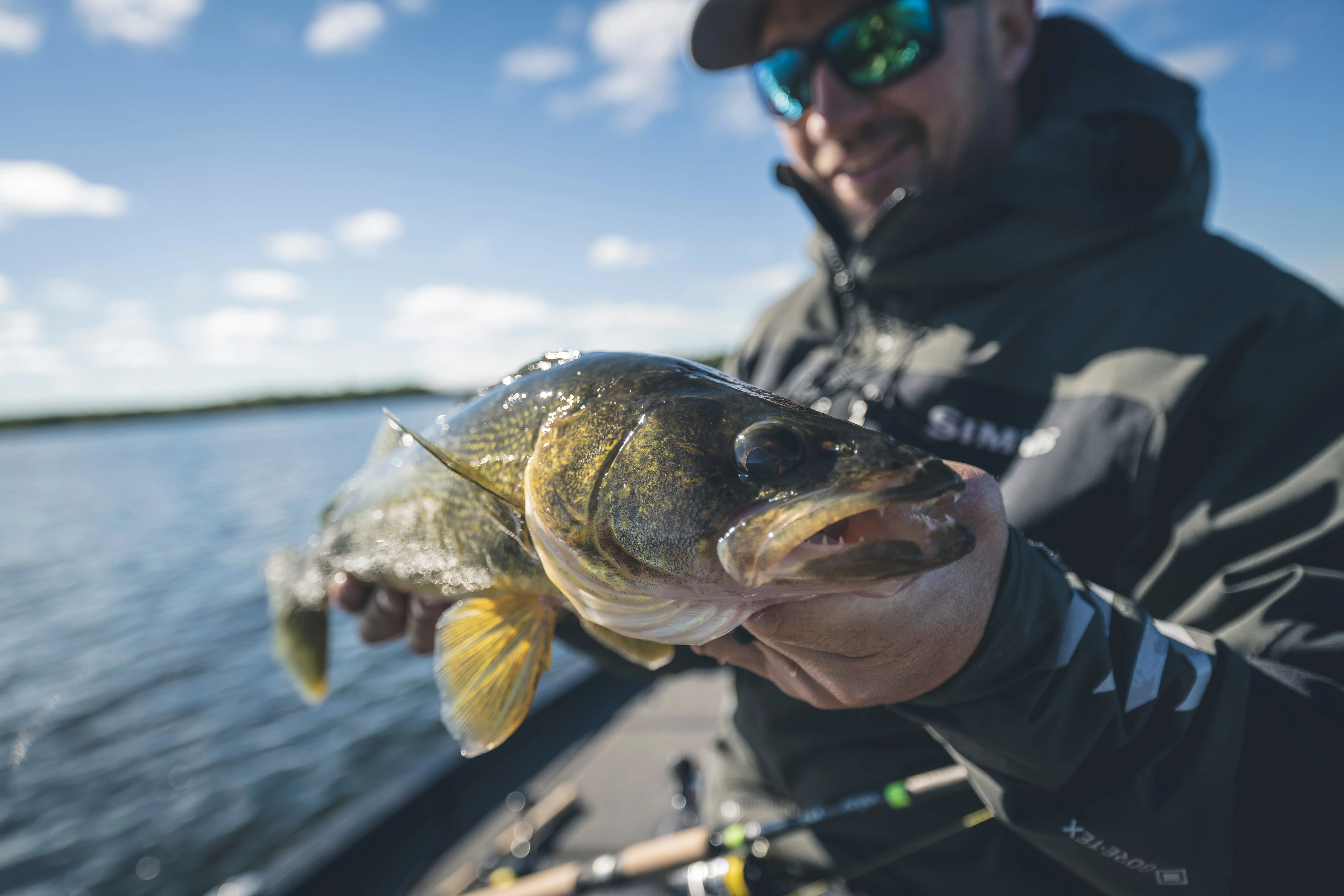
A nice walleye caught by drifting. G. Loomis
Drifting, or letting wind, waves, or current drag a lure or bait along promising structure or cover, is a great way to work large areas of water. Often, the goal of drifting, or drift-fishing, is to locate actively feeding fish. Once a school is found, anglers will often anchor upwind and cast jigs or slip-bobber rigs to the fish. Holding the boat steady with a GPS-guided lock system is another, often less disruptive technique.
How to Cast for Walleyes
There are times when casting spinners, spoons, crankbaits, and jigs from a boat is the best way to put ‘eyes in the cooler versus trolling or vertical jigging. That said, a fair bit of casting is done from shore, especially in river systems. The water below a roller dam can be an excellent place to target spring walleyes, as they make their way upstream but are stopped by this obstacle during their annual spawning run. In summer, any roiling, highly-oxygenated water in rivers will hold fish looking for prey and cooler temperatures.
How to Catch Walleyes with a Slip-Bobber Rig
Slip-bobbering is another strategy employed either from shore or from a boat. Slip bobbers are small, lightweight floats, often made of balsa wood, that slide or ‘slip’ to a depth determined by the angler’s placement of a system of beads and a nylon bobber stop on the mainline. The entire rig is shortened to an easily cast length as the bobber slides to the swivel-and-leader; however, once cast, the bait, usually a large, lively minnow, shadling, or leech, falls in the water column to the predetermined depth.
Slip-bobbering, like trolling and drifting, is an excellent way to present a bait over a wide expanse of potentially productive water. Usually, slip-bobber rigs are held in reserve until fish are located, with the boat then being kept in place and the bait worked downwind or downstream.
Best Baits, Lures, and Rigs for Catching Walleyes
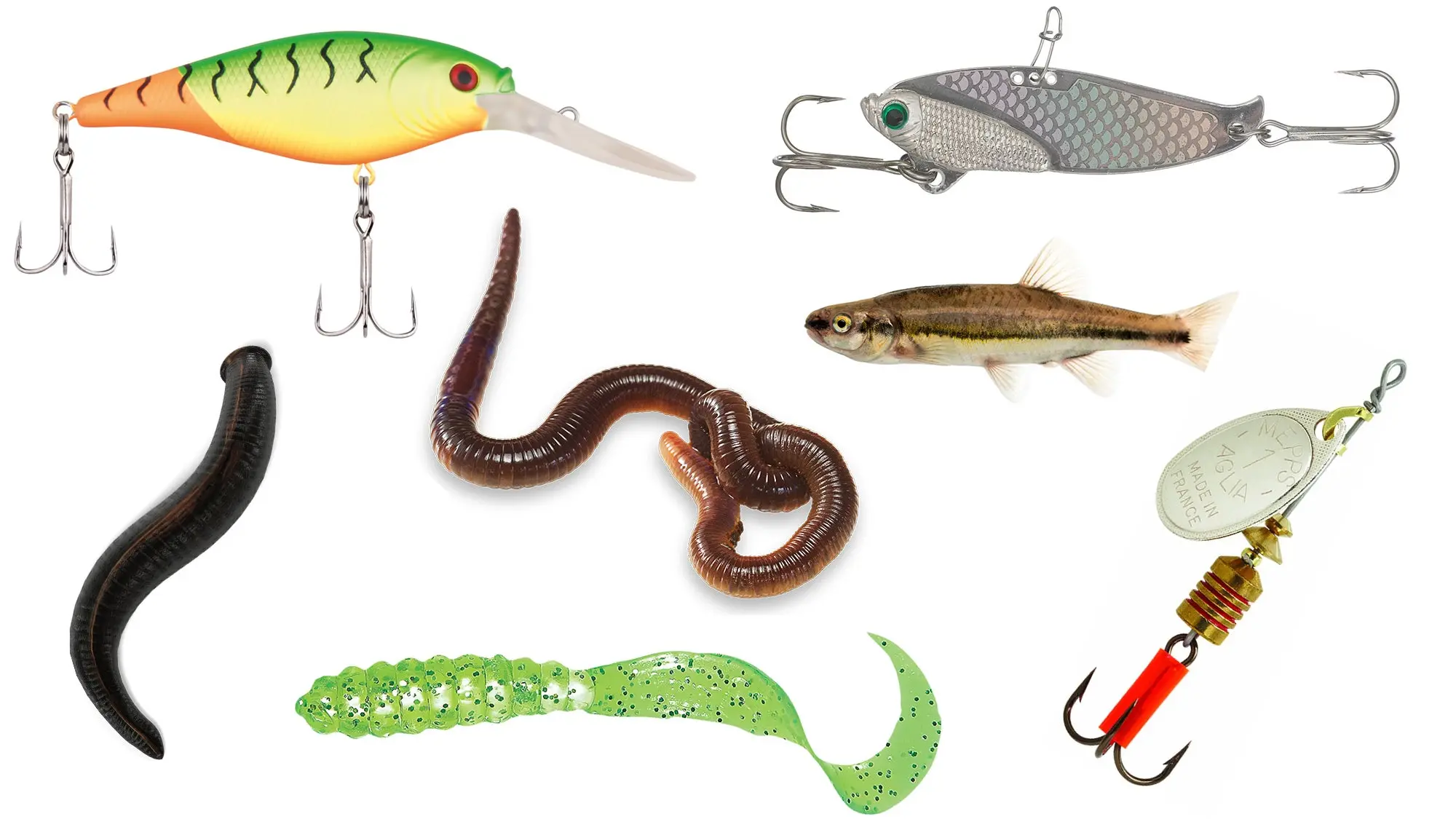
Crankbaits, blade baits, minnows, worms, leeches, soft plastics, and in-line spinners are all great walleye offerings.
The best baits and lures for walleyes
depend on the location and conditions. What’s more, there are more offerings a big walleye might clobber than we can list here. But here are the top producers day in and day out—seven options every serious walleye angler has to know about.
Nightcrawlers: Lots of fish love a crawler, but few more than walleyes do. A fat ‘crawler can be fished by itself under a slip bobber, used to tip a ¼-ounce lead head jig, or as a dressing to a weight-forward spinner, like an Erie Dearie, June Bug spinner, or ‘crawler harness. The very best thing about nightcrawlers? They’re easy to catch and keep.
Minnows: Big minnows, such as fatheads, shiners, or shadlings, run neck-and-neck with nightcrawlers as top-notch ‘eye bait. They’re often fished on a bare lead head or feathery marabou jig. Lightly hooked through the lips or underneath the dorsal fin, minnows work exceptionally well under a bobber, too. Aerators and a constant flow of oxygen will help keep these baits alive on board.
Leeches: While effective, leeches seem to be a regional favorite. Anglers in the Upper Midwest fish the ribbon-like bloodsuckers under a slip bobber or as an add-on to a plain lead head jig or Lindy Rig (a walking or bottom-bouncing style of presentation that combines an angled sinker with a fluorocarbon leader and a small colorful float or single spinner blade).
Spinners: Spinners in a wide array of sizes and configurations make excellent walleye lures. Some, like the tried-and-true Mepps Aglia
or Comet Minnow, or the equally as deadly C.P. Swing, are best fished without bait and either cast or trolled. Others, including the many different variations of ‘crawler harnesses (such as Mack’s Smile Blade rig or Yakima Baits’ Hildebrandt Hammer Time), allow anglers to slow-troll or drift a flashy live bait over and around structure.
Jigs and Soft Plastics: A Google search for “walleye jigs” yielded 1.56 million immediate results, which isn’t surprising when one looks at the jigs and soft-plastics racks at the local sporting goods store. Walleye jigs are as many as there are stars in the sky; there are football heads, bullet heads, barbed heads meant for plastics, and live bait jigs, complete with secondary stinger hooks designed to nail those short-striking finicky fish. Plastics, too, are many and varied, with the most popular being 3- to 4-inch twistertail grubs
, ringworms, and paddle-tail swimbaits, all in minnow-imitating color patterns.
Crankbaits: Usually trolled via a flatline or lead-core or run off to one side of the boat with a side planer, crankbaits mimic the small baitfish that walleyes prey on. Crankbaits can be fished below the 20-foot mark with the help of a downrigger system; however, some deep-diving crankbaits can themselves dive to 25 feet or more when tuned properly.
Blade Baits: These thin fish-shaped metal baits, such as the popular Heddon Sonar
, are worked in an up-and-down fashion, usually just above the bottom. You rip them up quickly, let them fall on a tight line, and then feel for a strike on the fall as the lure wobbles erratically.


